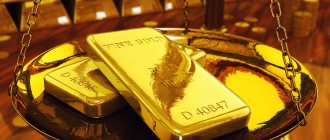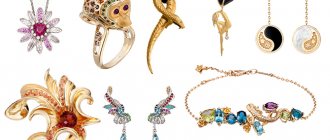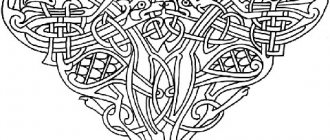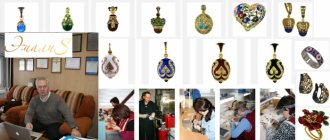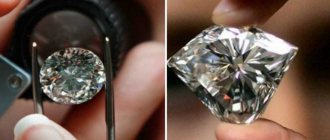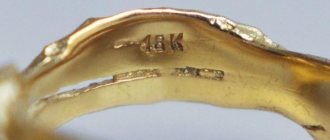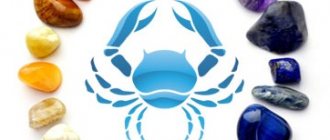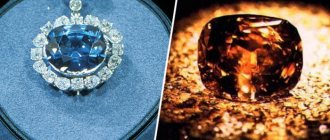The Harry Winston brand has been transforming every gemstone into an exquisite work of art for almost a century. He creates sculptural jewels with timeless designs and watches in the finest traditions of Swiss craftsmanship. The American company attracted some of the most prominent figures of the 20th century. Heads of state, royal dignitaries and film legends have been dazzled by jeweler Harry Winston's creations. Among them are the Duchess of Windsor, Jackie Kennedy, Richard Burton and his wife Elizabeth Taylor. Modern collections are as good as those from the past with flawless diamonds and fine finishing.
Harry Winston
Jacob Winston (Winston) emigrated from Ukraine to the United States in 1890. In New York, Manhattan, he founded a small jewelry workshop with his wife. 6 years later, the couple had a son, Harry (Harry). His father told him everything he knew about precious stones. The boy had obvious talent; he grasped everything on the fly. The skills of his father, who saw his son as the heir to his small business, also helped. Jacob had no idea that he was revealing “Jeweler to the Stars” to the world.
When Harry was seven years old, his mother died and the family moved to California to open a store in Hollywood. It was during this period that the formation of the legendary gemologist and entrepreneur began. The story goes that Winston was only 12 years old when he first distinguished himself as a master of his craft. The young jeweler bought a green stone that was about to be thrown away at a nearby pawn shop. The transaction amount was only 25 cents. Two days later, Uniston sold it for $800 because it was an emerald.
Harry left school at 15 to work in the family business. In 1914, the family returned to Manhattan and opened a repair shop on the Upper West Side. Two years later, Winston Jr. used $2,000 of his savings to open his own firm, Premier Diamond Company. He began buying and selling on the New York Diamond Exchange. Harry quickly gained a reputation for making the right decisions at the right time. However, Winston's luck ran out and he nearly went bankrupt overnight when one of his employees ran away with all his shares and money. Fortunately, this did not stop the jeweler. Instead of closing the business, he began buying jewelry at auction. The products were very cheap because they were considered old-fashioned and out of fashion. Winston remade them, selling them at a premium.
By 1925, the jeweler had purchased the collection of Rebecca Darlington Stoddard, a wealthy Pittsburgh coal and iron heiress, for $1 million. The following year, Harry bought the famous Arabella Huntington collection for $2 million. His habit of buying jewelry and altering it for resale made Harry a rich man again. In 1930, the Baldwin collection was added, which included a 39-carat emerald-cut diamond.
A little history
Harry Winston. This is his only photo on the Internet. He did not allow himself to be photographed, claiming that this was the requirement of his insurer, Lloyd's of London.
Harry Winston (1896–1978) was born in the USA in New York; by that time his father owned a small jewelry store in Manhattan. Probably this is still a gift from God, because from a young age he knew how to identify and evaluate precious stones. Everyone writes that at the age of 12, while passing by a pawn shop, he noticed a ring with a real emerald in a pile of jewelry. Having bought it for 25 cents, he sold it for $800.
At the age of 15, he dropped out of school and began helping his father in the store, then moved to Los Angeles. In 1914, they returned to New York and at the age of 18, young Harry Winston tried to create his own jewelry company with money earned on the West Coast. Not everything went smoothly, he even had to take out a bank loan, but he was confident in himself and persistently pursued his goal. The world was changing rapidly. Horses were replaced by cars, and in the First World War the methods of warfare changed, as tanks, aircraft and chemical weapons were used. The empires collapsed - Ottoman, Austro-Hungarian and Russian. Inventions such as the light bulb and the telephone have changed the quality of life for many people. The art nouveau style dominated in architecture, decorative and applied arts, and after the First World War it was replaced by art deco. Fashion for jewelry is also changing. Like no one else, Harry understood this, and built his jewelry empire on it.
Chunky Victorian jewelry is going out of fashion. What does a young entrepreneur do? He buys this jewelry from rich and wealthy Americans, removes large precious stones from the jewelry, saws them and granite in his own way, makes new elegant frames, fastenings and sells them again. However, these are new, modern products and they have a completely different price. In 1925, he bought jewelry from Rebecca Darlington Stoddard for a million dollars, then from Arabella Huntington (the widow of a railroad magnate). But they started talking about Harry Winston when he bought the jewelry collection of B.J. Baldwin (the Coal King) at auction, which included a 39-carat diamond. Harry would later be called the “King of Diamonds.” He will become one of the key figures in the US diamond market. Diamonds will become his love and passion, the main brand of the company.
Company logo
In 1932, the Harry Winston company appeared in Rockefeller Center, and from that moment on, the jewelry company would bear his name. A store will be opened in Geneva in 1955, and in Paris in 1957. He came up with the idea to rent out his most expensive and unique jewelry to Hollywood stars for award ceremonies. Of course, this was a publicity stunt that contributed to the fame and growth of the company's popularity.
In 1978, at the age of 84, he died and his eldest son, Ronald, took over the empire. It was under his son that a watch division appeared within the company in 1989. Watch products were at the same high level as jewelry. The company's watches have also become a high brand, just remember such brands as Opus, Avenue, Project Z. In 2004, Ronald sold shares of the company to the Canadian mining corporation Aber Diamond, which renamed itself Harry Winston Diamond Corp. In 2013, Harry Winston became the property of the Swatch Group, and the Canadian company changed its name to Dominion Diamond Corp. Thus ended the family business, but the magic of the name remained - Harry Winston.
Unique diamonds
In 1932, Winston closed the Premier Diamond Company and opened Harry Winston, Inc. He focused on creating sophisticated and minimalistic jewelry from the diamonds he bought. Harry spent money on advertising, in addition to purchasing new products and stones. In 1935, he added the 726-carat Jonker rough diamond to the collection. The deal was valued at $700,000. After paying 64 cents to ship the stone to New York by regular mail, Winston spent $30,000 to break the diamond. The largest diamond received was a stone weighing 142.9 carats. There were twelve of them in total. This decision brought the jeweler international fame.
Michael Jackson and Madonna
Harry continued to buy stones for cutting, including the 970-carat Star of Sierra Leone diamond in 1972. It was considered the third largest ever found and was cut into seventeen gems. The largest of these was a 143-carat emerald-cut diamond, which was later divided again. However, Winston was not just involved in buying and selling rare jewelry. He became so immersed in this art that he became a collector himself. Harry founded the traveling exhibition Court of Jewels, which ran from 1949 to 1953. The prize stone was the Hope Diamond, which has a deep sapphire blue color and weighs 45.52 carats. It was part of the Evelyn Walsh McLean collection. It also included the “Star of the East” diamond, 94.80 carats.
Harry Winston: the story of the brainchild of the “King of Diamonds”
Harry Winston managed to turn his small store in New York into the huge Harry Winston company, known throughout the world for its unique jewelry design and quality of diamonds.
His father, Jacob Winston, and his wife emigrated from Ukraine to the United States in 1890 and founded a jewelry workshop in Manhattan. 6 years later, Harry was born to the Winstons. When the boy was 7 years old, his mother died and Jacob and his son left for California to open their next store, but this time in Hollywood. It was there that Harry showed his talents as a gemologist and businessman. When Winston was 12 years old, he bought a beautiful 2-carat emerald at a pawn shop for 25 cents and resold it several times more expensive, so it became obvious that the guy would be able to adequately continue his father’s work.
Harry was not interested in school, so he left school at 15 to join the family business. Having mastered the profession of a traveling salesman, Winston Jr. traveled with a suitcase containing jewelry made in his father’s workshop and sold them to rich people.
Why the Winstons decided to return to New York in 1914 is unknown. Anyway, Jacob opened a repair shop on the Upper West Side. Helping his father with it, Winston Jr. earned $2,000 over the next 2 years and used it to open his own company, the Premier Diamond Company. Then he sold and bought stones at the “diamond exchange”. In 1918, the company's capital was $30 thousand, but the unexpected happened - Harry Winston was robbed by his own employee, and he had to start the business from scratch.
Life was changing at the beginning of the 20th century, women began to influence trends in society - the fashion industry and jewelry industry began to adapt to their desires.
Harry Winston
Women's interest in Victorian jewelry declined and they began to prefer more elegant and simple jewelry. Winston sensed this in time and developed a win-win marketing strategy. Harry bought their jewelry from wealthy families, sawed large stones, came up with a new cut for them and put them in a fashionable frame. So Harry became a rich man and in 1932, in New York's Rockefeller Center, he inaugurated a new company, Harry Winston Inc, having previously closed the Premier Diamond Company. Winston successfully competed with the largest jewelry company of that time, De Beers.
In 1935, he added a 726-carat Jonker rough diamond to his collection, which he purchased from De Beers. The deal was valued at $700 thousand. After paying 64 cents to send the stone to New York by regular mail, the jeweler sawed it into 12 pieces, the largest of which weighed 126.65 carats. For a dozen gems, he earned $12 million and earned the unofficial title of “King of Diamonds.” Harry Winston confirmed his reputation as an innovator and talented jeweler in 1940 by creating a technique for attaching stones and calling it Cluster. Thanks to her, it was possible to use stones with different types of cuts in jewelry, which gave them volume and made it possible to create an amazing play of light. One of Harry Winston's creations, made using the “cluster” technique, was the Emerald Cluster watch. For their decoration, stones of 4 different cuts were used. An intricate diamond pattern was placed on the octagonal-shaped case; the watch had a dial with two central hands.
One of the important steps for the development of the jewelry industry that Harry Winston took was the traveling exhibition Court of Jewels, which ran from 1949 to 1953. It featured the most famous gems of the era: Star of The East, Jonker, Catherine the Great sapphire, Mabel Boll and McLean diamonds. The exhibition, which covered all states of America, ended in 1953, and all proceeds from it were used to support projects of the March of Dimes Foundation, specializing in improving children's health. As for the stones, the highlight of the exhibition was the 45.52-carat Hope Diamond with a deep sapphire blue color.
In 1952, Life Magazine recognized Harry Winston's jewelry collection as the second largest in the world. The company lost the palm only to the British royal family. Harry Winston jewelry became so popular that Marilyn Monroe sang about it in her famous song “Diamonds are a Girl’s Best Friend.”
In 1955, the Harry Winston salon opened in Geneva, and 2 years later, an island of luxury from Harry Winston appeared in Paris.
Throughout his life, the jeweler generously shared his treasures, for example, in 1958, he donated “Hope” to the Gem and Mineral Hall of the Smithsonian Institution in Washington. Later, he donated several more valuable specimens there, which by 1997 formed the entire “Harry Winston Gallery.”
In 1960, the company's headquarters moved to Fifth Avenue, where its flagship boutique, creative studio and archives are still located. During this decade, the fame of Harry Winston jewelry grew stronger, and the company's annual income was estimated at $50 million. However, while selling expensive jewelry to monarchs and influential people in different countries of the world, Harry Winston also sold industrial diamonds and jewelry from a catalogue.
For the 200th anniversary of US independence, Harry Winston presented the public with a luxurious pear-shaped diamond weighing 75.52 carats, called the Star of Independence.
Harry Winston died in 1978, he was 84 years old at the time. The company was headed by his eldest son Ronald, who inherited his business acumen from his father. He maintained the brand at the proper level: Harry Winston jewelry shone on Oscar-nominated actresses, and salons were opened in Beverly Hills and Tokyo.
In 1989, the Harry Winston Ultimate Piece Collection division appeared. The collection he created was called The Ultimate Timepiece; it did not go unnoticed in the professional environment. Just look at the Signature model alone, which was powered by a hand-assembled mechanism and attached to the wrist with a hand-made hinged bracelet. A year later, the American jeweler pleased fans with the release of a complex Biretrograde Perpetual Calendar model with retrograde indications. A little later, Ronald Winston decided to experiment with materials for his watches, releasing the Galatea line for ladies. It was the world's first watch equipped with a rhodium case. They were followed by the complex Perpetual Calendar Minute Repeater, the product of four years of research and development.
In 1989, Ronald's younger brother, Bruce, decided to challenge Ronald's right to manage the company. The trial, which began in 1990, turned into a ten-year scandalous litigation, as a result of which the initial compensation of $4.5 million grew by 1997 to $28 million. Bruce did not accept these terms, so Ronald Winston had to buy back the shares at a market value of $54 million. To complete this deal, he raised funds from the investment company Fenway Partners and in 2000 became the sole owner of the brand. But the company’s financial condition was so shaken that in 2004 Ronald was forced to sell a controlling stake for $330 million to a Canadian mining corporation, which a few years later received one hundred percent of the brand’s shares and changed its name to Harry Winston Diamond Corporation.
The new owners of the company put Frederic de Narp at its head, who for many years led the American division of Cartier. Narpa invited Sandrine de Laage to the position of chief designer at Harry Winston.
In 2007, the company moved all watch production to Geneva and, in addition to regular collections, launched two high-profile projects, Opus and Histoire de Tourbillon. But the investment turned out to be unaffordable for Harry Winston Diamond Corporation. In 2013, the company's owners sold the brand to Swatch Group for $1 billion. Nyla Hayek became the chairman of the board of the group; under the terms of the transaction, Harry Winston Diamond Corporation again changed its name to Dominion Diamond Corporation and continued to operate independently.
Harry Winston Jewelry
Each Harry Winston piece is created from a special commitment to celebrating the individual beauty of each stone and the individual style of each client. Using cutting-edge technology developed by the brand's artisans and designers, the extraordinary jewelry is handcrafted and carefully crafted with only the highest quality diamonds. This is the main idea of Harry Winston: products are defined by the stones themselves, and not by the metal in which they are set. The company romantically describes the moment that influenced the jeweler's decision:
“One December night in the 1940s, when Harry returned home to his Scarsdale estate, he was inspired by the way the fresh winter snow glistened on the lush wreath hanging on his door. Noticing how the wreath's graceful dimensions and flowing curves were formed not by branches but by individual leaves, Mr. Winston began to dream up a modern way of making gemstones, allowing diamonds to guide each design."
As the first jeweler to loan actress Jennifer Jones diamonds for the 1944 Academy Awards, Winston pioneered modern red carpet glamor. Jones has since been joined by Grace Kelly, Katharine Hepburn, Faye Dunaway, Gwyneth Paltrow, Whoopi Goldberg, Jennifer Lopez and Charlize Theron. In 1991, Madonna appeared as Marilyn Monroe, wearing a sparkling white dress and $20 million worth of Harry's diamonds, including the iconic necklace. Gloria Stewart starred in Titanic in 1998 wearing the jeweler's replica necklace, then wore the 15-carat original on the red carpet.
The legendary diamonds also appeared in films and on television, which continued after the jeweler's death in 1978. Harry's creations were in such films as "Notorious" by Alfred Hitchcock, "The Graduate" by Mike Nichols, "Everyone Says I Love You" by Woody Allen and "How to Lose a Guy in 10 Days" by Donald Petrie. In the movie Gentlemen Prefer Blondes, Marilyn Monroe sings the song “Diamonds are a Girl's Best Friend,” which includes the line: “Talk to me, Harry Winston! Tell me everything about it!” Winston was called the "Jeweler of the Stars."
Harry Winston watch
The name "Harry Winston" is synonymous with the most magnificent gemstones in the world. This reputation for excellence has extended to watches that have been produced since 1989. The Premier Collection, which remains an integral part of the brand today, transformed Winston's signature New York glamor into a classic.
In 2007, the brand opened a modern production facility in Geneva, the watch capital of the world. The division maintains the same tradition of impeccable quality and the finest diamonds. The watch collections exude true authenticity and luxury, reflected in their fine design and meticulous craftsmanship of intricate details. In addition to the iconic Premier models, the elegant Avenue, innovative Ocean and sophisticated Midnight are available. The High Jewelry line, which displays real works of jewelry art, deserves special attention. The watches are made of platinum and gold, and are decorated with sapphires and diamonds.
The company also has a tradition of collaborating with some of the most respected independent watchmakers, as evidenced by the Opus collection. The series, dedicated to pushing the boundaries of watchmaking, was launched in 2001 and was run by Max Büsser until he left to found his own brand, MB&F, producing rare collectibles created by watchmakers such as François-Paul Gernet of FP Journe, Felix Baumgartner of Urwerk and Robert Greubel of Greubel Forsey. The pursuit of technical virtuosity continues in the Histoire de Tourbillon collection, which features an innovative approach with visible movements equipped with a tourbillon, a device that counteracts gravity. It was developed around 1795 and patented by the French-Swiss watchmaker Abraham-Louis Breguet, founder of the Breguet brand.
Girls' best friends
Let us note in parentheses that Harry Winston was not only an outstanding jeweler, but also an emphatically exemplary family man, firstly. And secondly, the famous American comedy film featured jewelry from the French house Cartier (Marilyn Monroe wore them). The question is why Harry Winston, who first “gave” actress Katharine Hepburn a diamond necklace for the Oscars in 1947, did not provide Monroe with personal jewelry, and today remains unanswered.
The history of the brand itself, however, is quite ordinary: Harry Winston was born in 1896, and six years before his birth, his father Jacob Winston opened a small jewelry store. Gradually growing up, Harry Winston spent a lot of time in his father’s jewelry studio (the family moved from Los Angeles to New York in 1912) and, of course, decided to continue his business. Winston registered his first personal company in 1920 - Premier Diamonds Company. By that time, the great Frenchmen from the house of Cartier were already working on the American market; art nouveau and art deco were also successfully practiced by the legendary American jewelry house Tiffany & Co. And Harry Winston realized that there was already someone to create jewelry in the USA, and he himself would collect exceptional collections and outstanding stones. Winston bought personal collections of the wives of American millionaires and outstanding stones: he opened his first store on Fifth Avenue in New York in 1932.
Of course, tradition means a lot to the Harry Winston story. Many decorations are created as replicas of old things - for example, the 2009 Lily Claster line is a “return” to the archives of the late 1940s (the flower of the modern Lily Claster collection would be copied from a sketch of the late 1940s). All archival documents are stored in the brand's studio. Thus, one elderly jeweler, Maurice Galli, still works in the atelier: he is already 85 years old, he worked under the strict guidance of Winston himself. Perhaps this is why all other jewelers and draftsmen are so afraid of the strict but fair Maurice Galli - after all, he saw and obeyed the master himself!
Of course, like any great jewelry brand, Harry Winston has its own technical discoveries. If, for example, Van Vleef & Arpels’ flagship technical invention is called “invisible frame” (or mystery setting, patented in the mid-1930s), then Harry Winston’s innovation is called “weightless frame”. This is a rather clever system of flexible “legs” (made of gold or platinum, the brand works quite a lot with this very hard
metal) that support a stone or several stones. It is important to emphasize that the “weightless frame” is used not only in the manufacture of rings with solitaires, but also in jewelry “canvas”. What is especially impressive is the flexible, thin precious “canvas”: the stones are located at different levels, and this creates, to a certain extent, an architectural, multi-level decoration. In any case, Harry Winston necklaces, bracelets, pendants and earrings have an almost balletic flexibility. The magnificent New York line, created by designer Sandrine de Laage, can be considered one of the best and most representative collections of past years. It was a dynamic, very beautiful and very modern collection.
Harry Winston also has an interesting watch production: the brand's manufactory, with a facade copying the façade of a historic boutique on Fifth Avenue, is located in the very “watchmaking” suburb of Geneva, Plan-les-Ouates - next to, for example, the Vacheron Constantin manufactory. Harry Winston produces women's jewelry watches in the Art Deco style (Avenue C line), all-diamond “fantasy” watches (Exceptional Pieces), formal watches (Midnight, Premier collections), sports watches (Ocean), as well as complex and collectible watches — Histoire de Tourbillon and Opus. Among collectors and the public involved in watchmaking, the Opus series is the most popular: this is a collection of designer watch works, invented in 2000 by Maximillian Büser. It was the Opus collection that sparked the popularity of unique and quirky watch pieces made by independent watchmakers. The Opus line helped pave the way for many young brands that produced avant-garde, radical watch models.
Despite the fact that Harry Winston's watch positions are unusually and deservedly strong, this bright name is still associated to a greater extent with “high” jewelry. Harry Winston is the ultimate diamond craftsmanship that should not even be attempted to be imitated.
Harry Winston Company today
After the death of the jeweler, the wife took control of the business. After 8 years, she died, and the business went to two sons: Ronald and Bruce. Unfortunately, during this period things did not go very smoothly, as the brothers fought for leadership. The company's shares were rapidly falling, and the heirs accused each other of fraud and did not contribute in any way to the development of the jewelry house. Ronald was eventually forced to pay $54.1 million to buy out Bruce's stake. This only happened in 2000, when the war was finally over.
In 2013, Harry Winston, Inc. announced that it has entered into an agreement to sell its diamond jewelry and luxury watches division to Swiss company Swatch Group. Despite the changes, the jewelry house is still considered one of the best. He continues to acquire unique stones, such as the 13.22-carat blue diamond that became known as the “Winston Blue” and the rare 19-carat pink diamond “Pink Legacy.” Boutiques are located in the USA, Great Britain, China, Japan, United Arab Emirates, Germany, Switzerland, Singapore, Turkey, Monaco, France, Italy, Russia and other countries.
